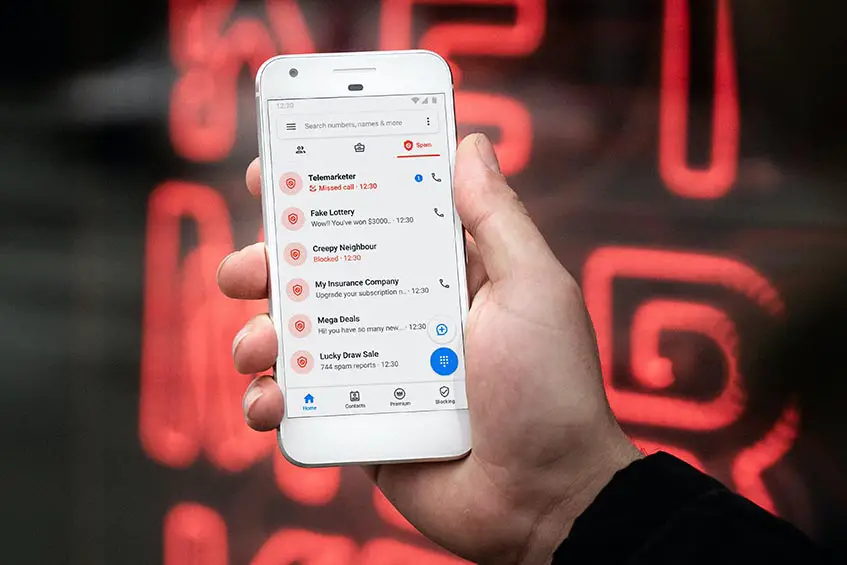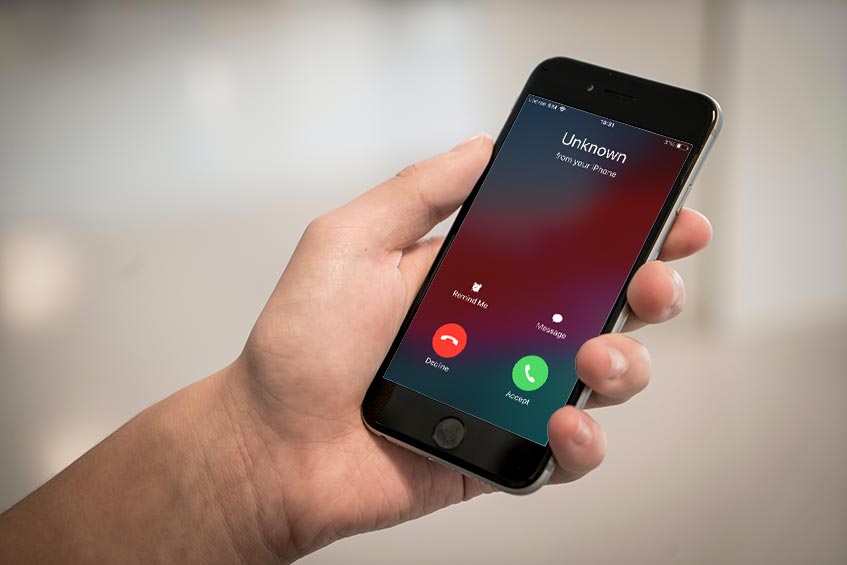As global technology has advanced and streamlined many of the basic processes found in an average person’s daily routine, so, too, have technological advancements that pose more digital dangers in the virtual landscape. One such danger is call and text spoofing, a new and troublesome form of robocalling. Read on to discover just how insidious these communications can be–and what you can do to protect yourself from potential scams.
Estimated reading time: 8 minutes
What is spoofing?
Spoofing refers to robocalls and texts that involve the manipulations or falsification of caller ID information to increase the likelihood that the recipient will answer, respond or take action. The fake caller ID information disguises the caller’s true identity by using a local area code, a fake number labeled as a trustworthy organization, or a call or text that appears to be coming from a known number.
Victims of a spoofing attack that answer the call, click on text links or follow the instructions may end up in precarious situations regarding their money or information. Spoofed calls and texts use scripts or false links and forms to try to scam recipients and gain valuable data from them that could be used in fraudulent ways.
You may have been the victim of a spoofed text or call if you ever received a communication stating you owe an organization money, there is a warrant out for your arrest, you have an overdue bill, or there is a problem with an account of yours that requires immediate attention. These callers promise that the issue will be resolved after you’ve provided your information, logged in with your personal passwords or made a payment to settle your balance.
Why are they dangerous?
Because it appears to be from legitimate organizations, it can be tricky to weed spoof texts and calls out and separate them from authentic and accredited sources. Many spoof calls make contact claiming they’re from the IRS and need to settle a hefty overdue tax bill. Others claim to be from your phone, insurance or other utility company and ask for account numbers, passwords and additional identifying information. On the surface, spoof callers give you no reason not to trust them. Their scripts are professional, and their information seems reliable, if a little far-fetched. Spoof callers use language to convey a sense of urgency and seriousness, which can prompt many to fall for their schemes and hand over sensitive information.
How do these scams work?
Spoof callers and texters mask their original number to operate their scam, so the caller could actually be located just about anywhere in the world. They can alter the appearance of their phone number and can even add a display name on the caller ID to further legitimize the way they show up on your phone.

These scammers get your phone number through many sources, and it’s surprisingly easy as name and phone number data are not considered private information. They may have acquired your number through a local listing, a public archive or an online database with a list of cell phone numbers and who it belongs to. They may also have stolen data from any security breaches, which usually provides them with many numbers at once with little effort on their part.
The scammers then get in touch with unsuspecting cell phone owners posing as another entity and collect even more personal information that can either be used for their own financial gain or sold to another group or person who will use that data for relentless marketing purposes, identity theft, financial fraud and other criminal purposes.
Is it common?
Unfortunately, spoof calls and texts are incredibly common. It is estimated that Americans received just under 50 billion robocalls in 2020, which amounts to about 150 calls per person in the year, or 250 calls per adult. Because robocalls are practically an inevitable part of owning a cell phone, spoof calls benefit from their own efforts to stand out amongst the other generic scam callers. The vast majority of robocalls you receive are likely using spoofing methods, including hiding their identity entirely by displaying an “unknown number” alert.
Is it illegal?
While the scams they attempt are absolutely illegal, the calls themselves are not always against the law. The laws that surround caller ID falsification are not cut and dry. A portion of the time, it is necessary for some professionals to disguise their numbers when they have to make contact with another party with sensitive information, such as when a business returns a customer service call and displays the toll-free callback number rather than the direct line or a medical provider must call a patient on a personal line but displays the number of their practice instead.
However, the FCC has ruled that it is illegal to disguise any caller ID information when used to defraud the recipient or obtain valuable items or information unethically. The spoof calls and texts may keep coming, but you don’t have to fall victim to their scams.
What can I do to stay safe?
The government, cell phone service providers and other organizations are doing what they can to solve the problem of spoof calls and texts. Still, in the meantime, each cell phone owner needs to take steps to protect themselves from insidious communication efforts.
Never answer unknown numbers
Scammers prey on their targets with convincing caller ID information that is designed to increase the number of pickups and responses they receive. The first step in scam prevention is discernment. Spoof calls and texts won’t work if you don’t answer, so let your phone go to voicemail if it’s from a number you don’t recognize–no matter how familiar it may appear to be.

Hang up and call the official numbers
If you do end up on the line with a potential spoof caller, or if you receive a persuasive and convincing text that appears to come from a company you trust, end the communication and seek out the official channels to find out if the information you’ve heard or read from the scammer is, in fact, legitimate. Go to the official website of whoever has claimed to get in touch with you and reach out on your own to get to the bottom of the issue. If it’s legitimate, an official representative can help you sort things out. If the company or organization has no record of what you’ve been confronted with, it’s likely that you can safely ignore it.
Block them via your phone’s settings
Many smartphones have the capability to screen calls through built-in settings that will only produce notifications or sounds if the call comes from a number in your address book. Navigate to your settings and select your device’s phone app to explore what options are available to you when it comes to silencing potential spam calls. Major phone carriers also offer inexpensive monthly subscriptions for advanced spam blocking services. These services have features such as automatic blacklists, customizable blocklists, and network-driven technology that weeds out potential scammers.
Use third-party apps
When a scammer uses the same number and information repeatedly, their information can get flagged as potentially dangerous, and they could end up in a database full of other scam callers. Many third-party apps access these databases and link with your phone’s connectivity to block any callers from these lists and prevent a notification altogether. When these apps are installed on your device, they can answer calls with a pre-recorded “out of service” message, answer and hang up for you or instantly flag and report the number so they won’t call again.
Enroll on the registry
Telemarketers are prevented from calling any number registered on the national Do Not Call list, so if your number still needs to be added, it can be helpful to do so. However, this method relies on callers to check in with this registry and abide by the rules, and many spoof callers and texters aren’t exactly out with honest intentions. As well, calls and texts originating from outside the US may pay no mind to these lists. Still, it may have an impact on the number of total calls you receive in a day, and it’s worth the extra steps to safeguard your number.
Change your number
It may seem like the spoof calls are incessant and never seem to end, or you may even discover that someone is using your number to disguise their own. In these circumstances, it’s time to make a more drastic move. Contact your cell phone carrier to request a new phone number, and try to request an unused number that is less likely to have been shared or used by spoof callers in the past.
File a report
Whether you have identified a spoof caller, suspect one, or your number is being used for spoof communications, you can file a report with your state’s fraud reporting system, the FCC, or the FTC. You may not be able to identify the caller directly, but you can hopefully forward the information to someone who can.
Have you been the target of spoof calls lately? What do you do when you get one? Let us know on social media by using the buttons below.










